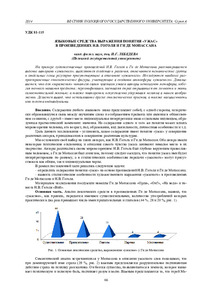Please use this identifier to cite or link to this item:
https://elib.psu.by/handle/123456789/1669| Title: | Языковые средства выражения понятия «ужас» |
| Authors: | Лебедева, И. Г. |
| Issue Date: | 2014 |
| Publisher: | Полоцкий государственный университет |
| Citation: | Вестник Полоцкого государственного университета. Серия A, Гуманитарные науки: научно-теоретический журнал.- Новополоцк, 2014. - № 2. - С. 66-72. |
| Abstract: | На примере художественных произведений Н.В. Гоголя и Ги де Мопассана рассматривается видение авторами «ужасного», выделяются сходство и различия, отмечаются тематические группы и отдельные семы регулярно присутствующие в описаниях «ужасного». Исследуются наиболее распространенные стилистические фигуры, участвующие в создании атмосферы «ужасного». Доказывается, что для «заражения» читателя своим чувством ужаса авторы используют метафоры, избегая точного названия предмета; персонификации, заставляя страх отрываться от личности и жить самостоятельной жизнью; а также повторения, искусственно удерживая негатив в нашем воображении. Делается вывод, что использование других стилистических приемов, а также насыщенность ими текста индивидуальны. = the content of each linguistic sign represents the fusion of social and individual components. On one side we see the historical links between the material meaning of an object or event and ideal representation in the collective mind. On the other side there is always an individual who adds his own vision to the collective representation. We examine the vision of horror in works of N. Gogol and G. de Maupassant. There are common and differences. Thematic groups and semes that always accompany the expression of horror are disengaged. the most frequent stylistic figures who take an active part in the representation of the horror are analyzed. We prove that the contamination of the reader with the feeling of fear is always going the same way: the authors avoid naming things in their own names, they rush to the metaphors; they separate the personage and fear, fear is now independent, it has its own life through personifications; more negative emotions are very entrenched in our memory through the regular repetitions. the use and the amount in the text of other stylistic means represent individual variation. |
| Keywords: | Языкознание языковые средства произведения Ги де Мопассана произведения Н.В. Гоголя |
| URI: | https://elib.psu.by/handle/123456789/1669 |
| metadata.dc.rights: | open access |
| Appears in Collections: | 2014, № 2 |
Items in DSpace are protected by copyright, with all rights reserved, unless otherwise indicated.
